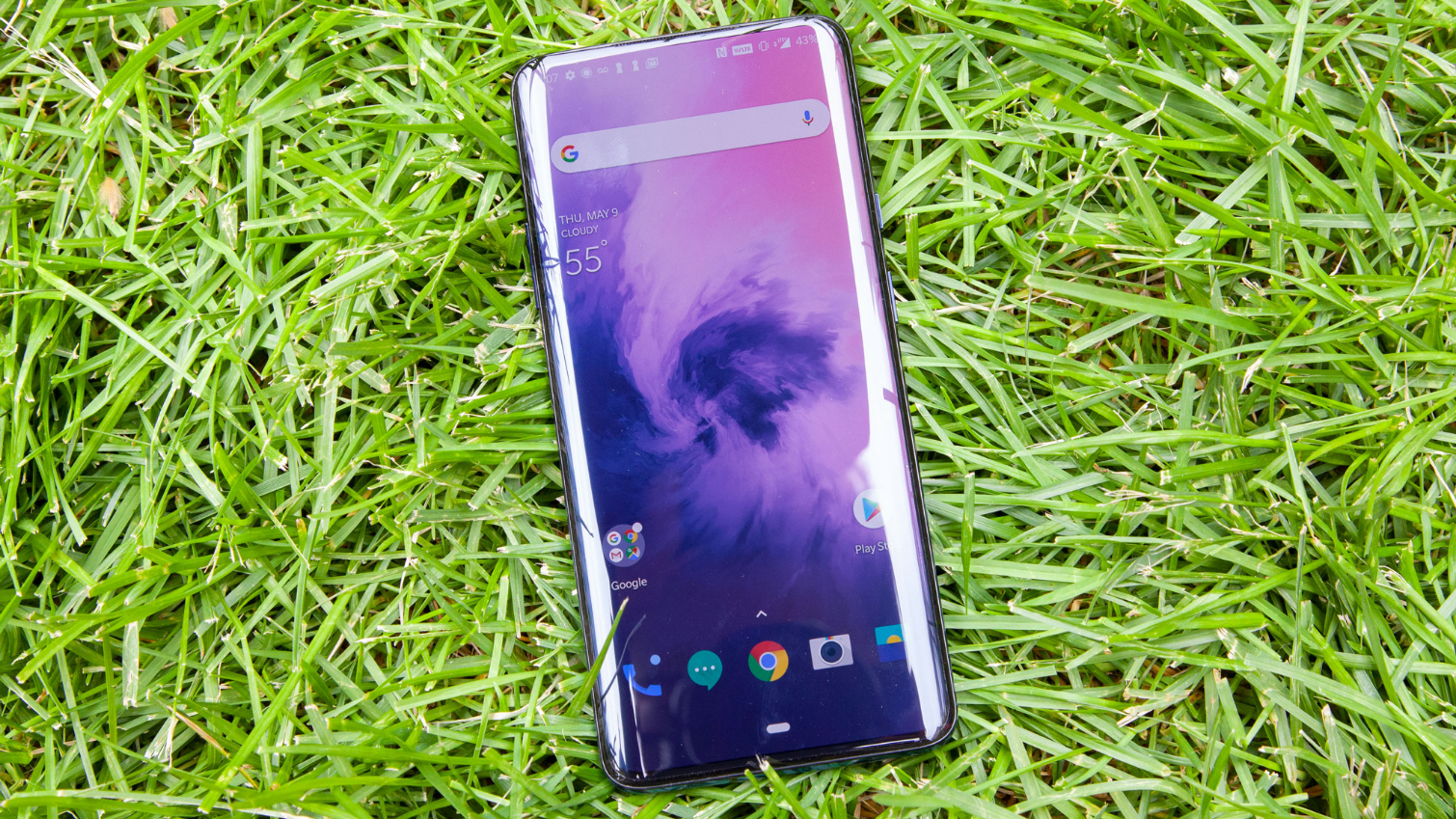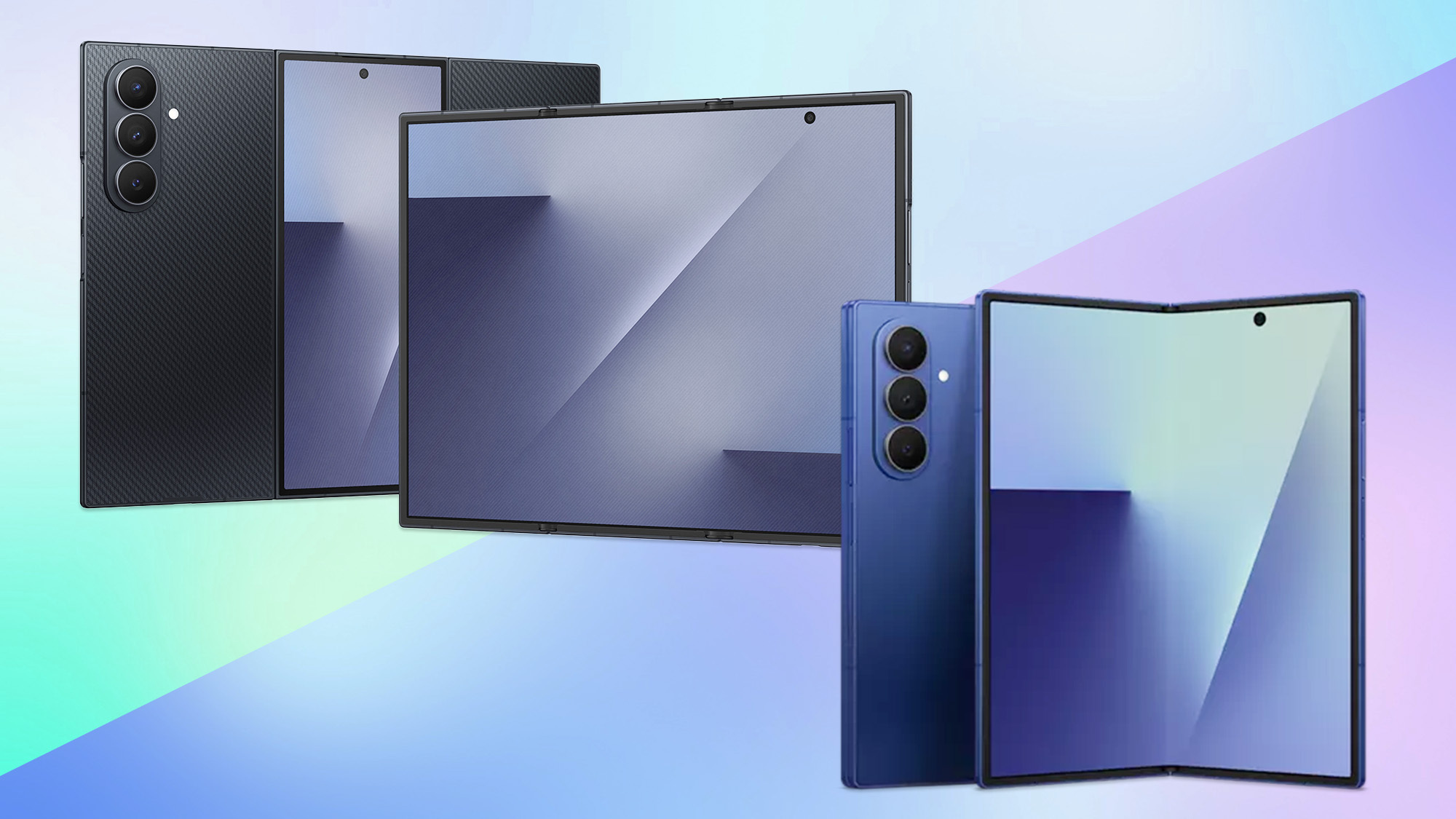Tom's Guide Verdict
The OnePlus 7 Pro offers a gorgeous design, stunning display, powerful performance, solid cameras and a stellar version of Android for a great price.
Pros
- +
Powerful performance
- +
Pop-up camera doesn't feel gimmicky
- +
Excellent low-light photos
- +
Fast-charging is impressive
Cons
- -
Underwhelming battery life
Why you can trust Tom's Guide
Forget notches and punch holes. The OnePlus 7 Pro ($669/£649) sports a unique full-screen design with a large 6.67-inch display. It doesn't make performance trade-offs. Its photos are pretty damn good. And while it's not exactly cheap, the OnePlus 7 Pro delivers so much for the money thatt it feels like a bargain.
The newer OnePlus 7T offers many of the OnePlus 7 Pro's top features (triple lenses, a 90-Hz refresh rate) in a device that costs $599. But if you want a design that turns heads, the OnePlus 7 Pro is one of the best Android phones around.
- The best phones right now
- Best phone battery life: The longest-lasting smartphones
- Best unlocked phones
OnePlus 7 Cheat Sheet: What's New
- OnePlus created an edge-to-edge display by embedding the camera lens in a mechanism that pops up at the top of the 7 Pro.
- The 7 Pro sports a triple-lens camera array with wide-angle, standard and telephoto lenses.
- Qualcomm Snapdragon 855 and 12GB of RAM put the 7 Pro in iPhone XS territory when it comes to performance power.
- OnePlus improved its low-light Nightscape camera feature, and it shows.
- The OnePlus 7's battery life could be better, but the fast charging impresses.
- Since this review was first posted, OnePlus has come out with a successor, the OnePlus 7T Pro, though that phone won't be available in the U.S.
| Price | $669, $699, $749 (£649, £699, £799) |
| Display (Resolution) | 6.67-inch Quad-HD+ AMOLED |
| Rear Camera(s) | 48-MP (f/1.6), 16-MP ultra-wide-angle lens (f/2.2), 8-MP telephoto lens (f/2.4) with 3x optical zoom |
| Front Camera(s) | 16-MP (f/2.0) |
| CPU | Qualcomm Snapdragon 855 |
| RAM | 6GB, 8GB, 12GB |
| Storage | 128GB, 256GB |
| microSD | None |
| Battery | 4,000 mAh with Warp Charge 30 |
| Colors | Nebula Blue, Mirror Gray, Almond |
| Size | 6.4 x 2.99 x 0.35 inches |
| Weight | 7.26 ounces |
OnePlus 7 Pro availability
After years of only selling its phones unlocked, OnePlus has started selling some models through carriers. T-Mobile originally offeered the 8GB/256GB version of the OnePlus 7 Pro for $699, though that phone is no longer available, presumably so that T-Mobile can make room for the OnePlus 7T when that $599 model goes on sale Oct. 18.
You can still buy OnePlus 7 Pro models directly from OnePlus, including the entry level 6GB/128GB version for $669. Unlocked OnePlus 7 Pro models work on the GSM networks of T-Mobile and AT&T. Verizon customers can use the phone on that carrier's network, too, but they'll have to contact Verizon to route all calls, messages and data traffic over LTE.
Sprint also offers a 5G-capable version of the OnePlus 7 Pro. The phone costs $840, which is more expensive than other 7 Pro models, but a relative bargain compared to other 5G phones like the Galaxy Note 10 Plus 5G, which Verizon sells for $1,299. Currently, you can lease the OnePlus 7 Pro 5G at Sprint for $20 a month for 18 months (a $15 discount off the normal rate).
For people in the UK, you can buy any of the three versions directly from OnePlus for £649/£699/£799 respectively, or the 8GB/256GB and 12GB/256GB versions from Amazon UK. The 7 Pro 5G is also available on contract with EE, for between £59 and £79 a month depending on how much data you're willing to pay for. (UK shoppers can also get the OnePlus 7T Pro for £699 instead if they want a phone with a faster Snapdragon 855 Plus processor and some other enhanced features.)
Design: As premium as it gets
The OnePlus 7 Pro is, quite simply, gorgeous. Everything about it speaks my language, even though the practical part of my brain hates its size. At 6.4 inches long, the 7 Pro isn't the largest phone you can buy right now, but when I put it in my front pocket, it's big enough to poke me in the stomach when I sit down.
Get instant access to breaking news, the hottest reviews, great deals and helpful tips.
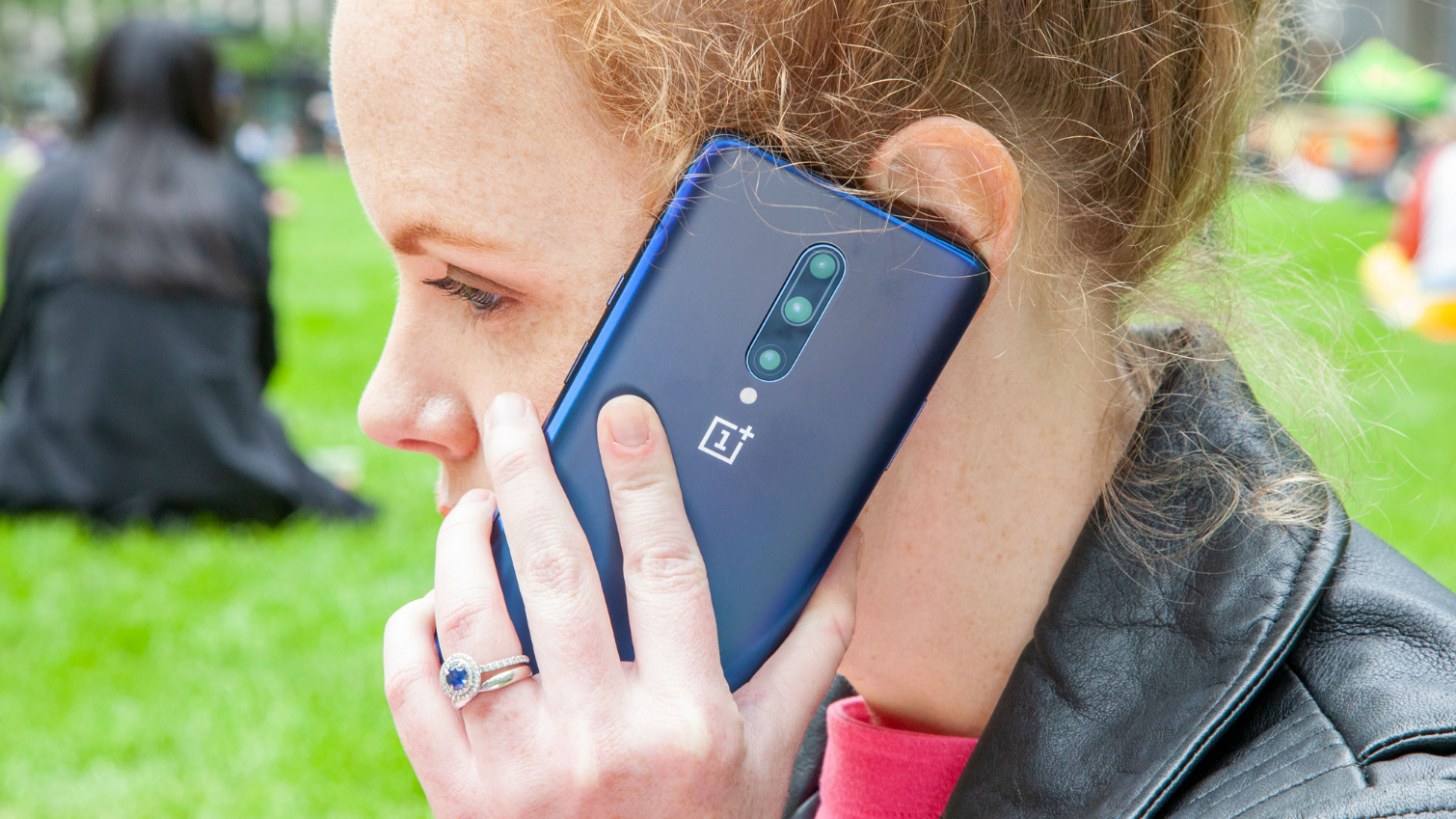
But I'm willing to overlook that because OnePlus combines the best parts of Huawei and Samsung's design sensibilities in a flagship phone that costs a third less than those companies' latest devices.
The 7 Pro's slightly curved AMOLED makes the gigantic, 6.67-inch screen seem every larger and more immersive. It's reminiscent of Samsung's Galaxy S10 Plus, but bigger (and, to my eye, better).

Then there's the glass trim and back. Each of the 7 Pro's three shades offers something a little different, but the Nebula Blue and Almond are standouts in a sea of glossy black slabs. The blue model I tested reminded me of Huawei's ombre flagships, but more refined. The matte finish looked navy when the phone was sitting next to me on a table, but when I glanced at it from across my kitchen, the glass reflected cobalt and baby blue hues. It reminded me of a sports car.
OnePlus combines the best parts of Huawei and Samsung's design sensibilities in a flagship phone that costs a third less than those companies’ latest devices.
The 7 Pro's Almond color wasn't available at launch, but it is now. And it's my favorite of the three: the shade is a creamy vanilla that in certain lights evokes champagne, like the gold iPhone XS does (but more striking).
Display: No distractions
I hate watching TV shows or movies — or anything lengthier than a music video — on a smartphone. Or at least I did, until the OnePlus 7 Pro entered my life.
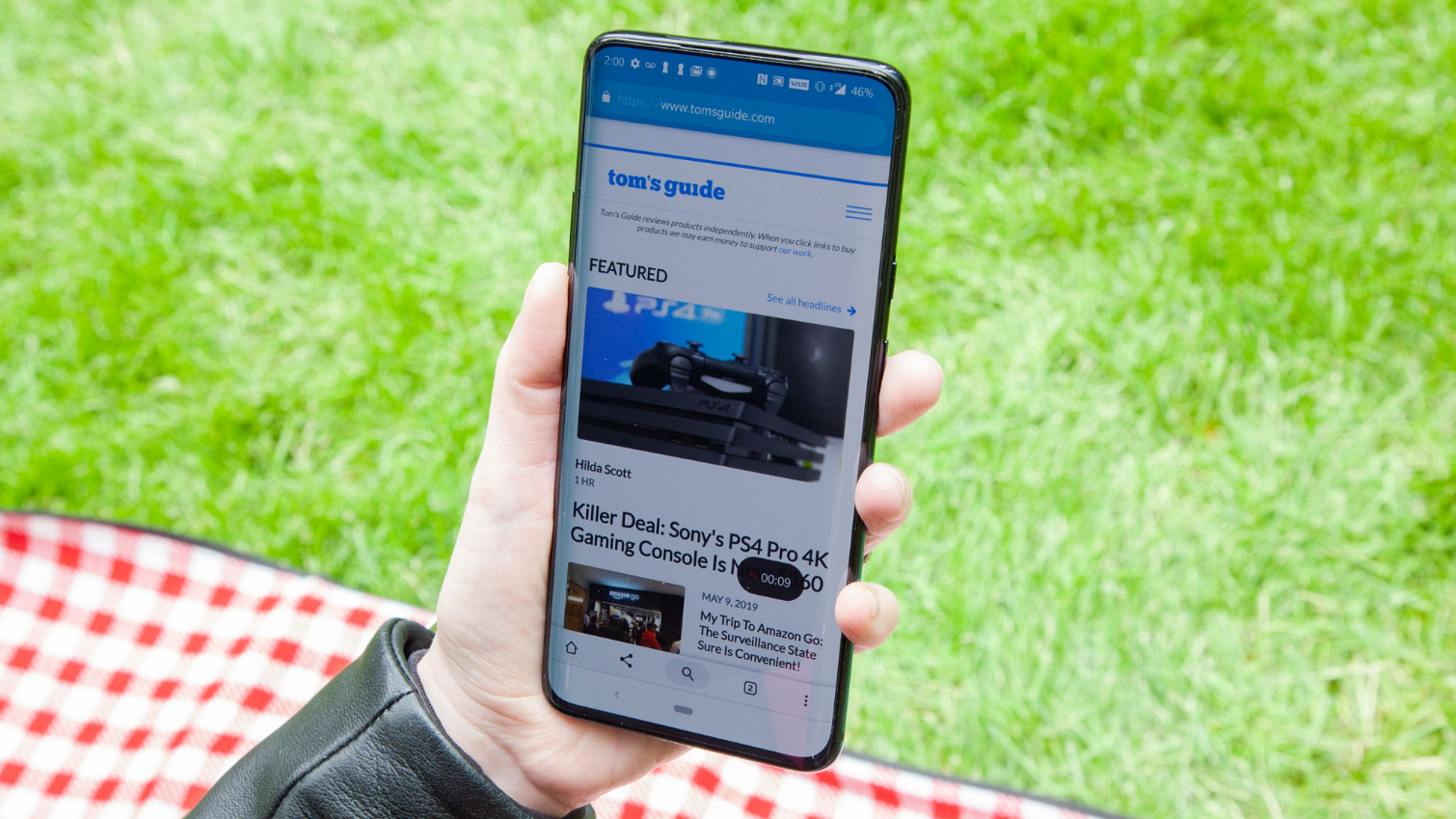
This screen is gorgeous. The 6.67-inch curved AMOLED panel reminded me of Samsung's Galaxy S10 Plus display. Like that 6.4-inch screen, the 7 Pro's display earned DisplayMate's A+ rating. But unlike the S10 Plus, the 7 Pro's screen is unmarred by camera cut-outs. No notch swoops down from the top. Whether reading long-form stories, pulling up New York Times recipes or binging "My Crazy Ex-Girlfriend" on Netflix, the 7 Pro's screen completely pulled me in.
OnePlus beefed up the 7 Pro's display with a 90Hz refresh rate, which I didn't think would make a huge difference in my web-browsing experience — but it did.
The 7 Pro's screen is both brighter and more colorful than the S10 Plus' panel. The 7 Pro's display covers 180% of the sRGB color gamut, which is a wider range than the S10 Plus (136.5%), the iPhone XS Max (123%) and the Pixel 3 (170.2%). The 7 Pro also notched a 0.18 on the Delta-E test of color accuracy, easily beating displays of pricier flagships, such as the S10 Plus (0.29) and iPhone XS Max (0.22). (Numbers closer to 0 are better.)
OnePlus beefed up the 7 Pro's display with a 90Hz refresh rate, which I didn't think would make a huge difference in my web-browsing experience, but it did. Scrolling through Twitter or reading lengthy articles was a delight. I switched between 60 and 90 in the display settings several times just to make sure my eyes weren't deceiving me. It's so smooth.
MORE: OnePlus 7 Pro vs. Pixel 3: Which Phone Wins?
Cameras: Low-light rivals Pixel
OnePlus isn't the first smartphone maker to extend its display by removing the camera from the screen and putting a retractable pop-up front-facing lens on top of the device. In fact, we saw a front-facing pop-up camera and in-display fingerprint sensor in the Vivo Nex S nine months ago. But that phone lacked polish, which the 7 Pro offers in abundance.
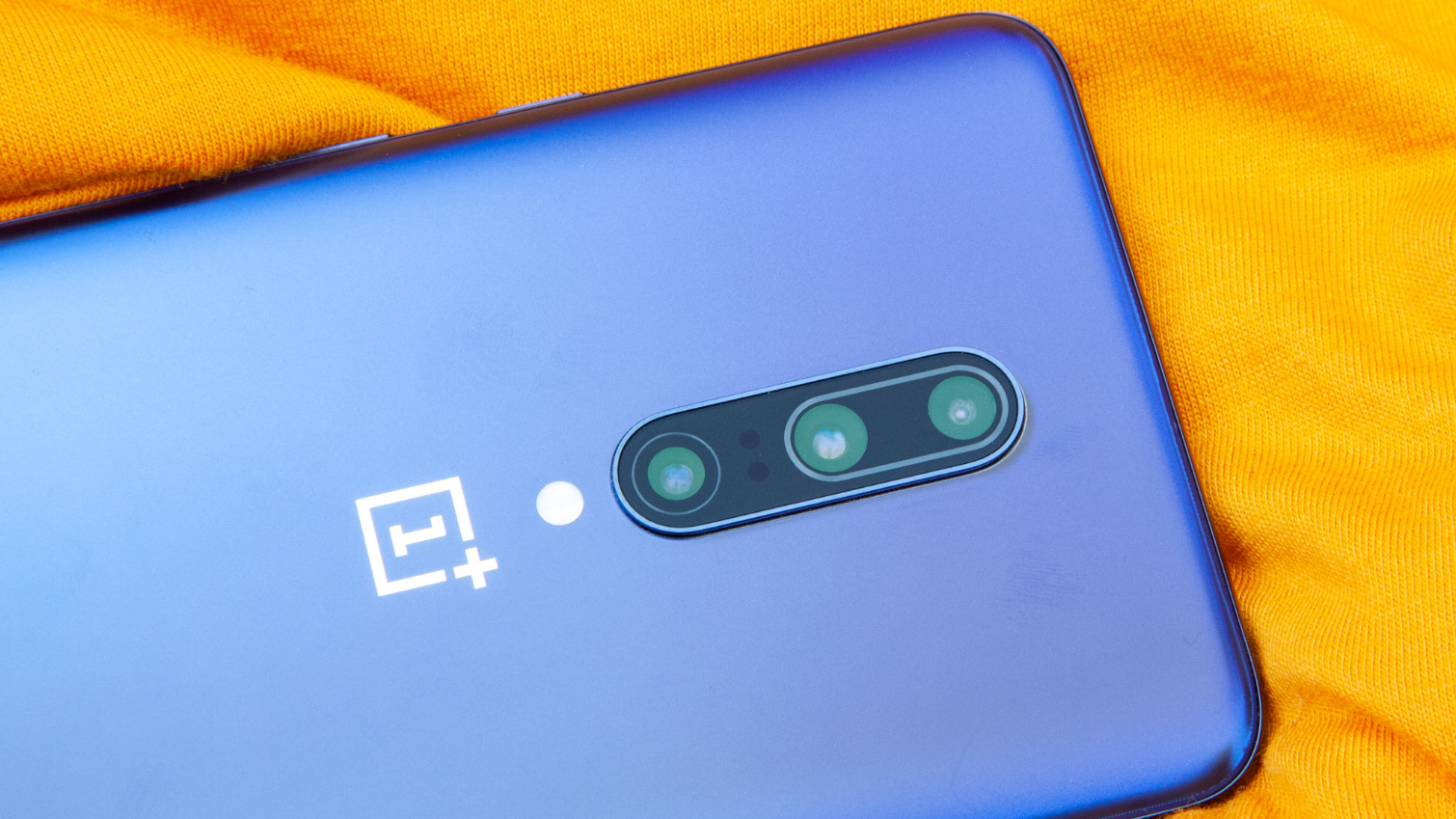
In addition to a pop-up selfie cam, OnePlus stacked three lenses on the back of the 7 Pro: a 48-megapixel standard lens, a 16-MP wide-angle lens with 117-degree field of view and an 8-MP telephoto lens with 3x optical zoom.

OnePlus has never offered the best smartphone camera, but the 7 Pro's triple-lens array is damn good, particularly outdoors.
In this shot of a cup of ice cream, the 7 Pro's shot is much more natural looking than the Galaxy S10E's photo. The Samsung phone's dual-lens camera added a strange flare to the edge of the peanut butter marshmallow scoop that wasn't there in real life. The Pixel 3's image has better contrast, but is overall darker and cooler than the 7 Pro.
Then I captured the Hudson River at sunset using the 7 Pro and S10E's wide-angle lenses. The 7 Pro's photo was more color-accurate, but the lens also distorted the edges. The S10E's shot is more dramatic, but not as true-to-life. However, the wide-angle lens didn't warp the edges of the shot like the 7 Pro did.
The Nightscape mode introduced in the OnePlus 6T is much improved in the 7 Pro — the shots are brighter and clearer, and the exposure time is reduced so you don't have to hold still quite as long to ensure a clear shot. In my experience, it rivaled the Pixel 3 for amazing low-light images.
I captured a mezcal cocktail perched next to a tall plant in a completely dark bar lit by a single red bulb. The 7 Pro's sensor illuminated the wood paneling so much so that you can see individual grains in each board. You can also see the grooves in the plant. The 7 Pro blows out the rim of the coupe, but overall the 7 Pro's Nightscape mode impressed us.

The Pixel 3's image in the same setting is, surprisingly, more natural. The contrast between the plant, the red backlight and the cocktail glass is heightened in the Pixel 3. But its Night Sight mode did nothing to highlight the couch, and you can barely make out any detail in the plant.
But you do still need to keep your hands steady. I shot lilacs against a backdrop of plants, trees and a night sky, and I waited until the 7 Pro's Nightscape mode told me the phone was processing the image to move my hand. And yet, I still moved it too quickly for the camera, which resulted in a blurry lilac bush.
The pop-up front-facing camera takes perfectly good selfies. And with the extended lens, you'll never forget where to look. Portrait selfies in particular are excellent — the 7 Pro smooths out the area behind my curls in a way that few other flagship cameras can pull off (see: Pixel 3).
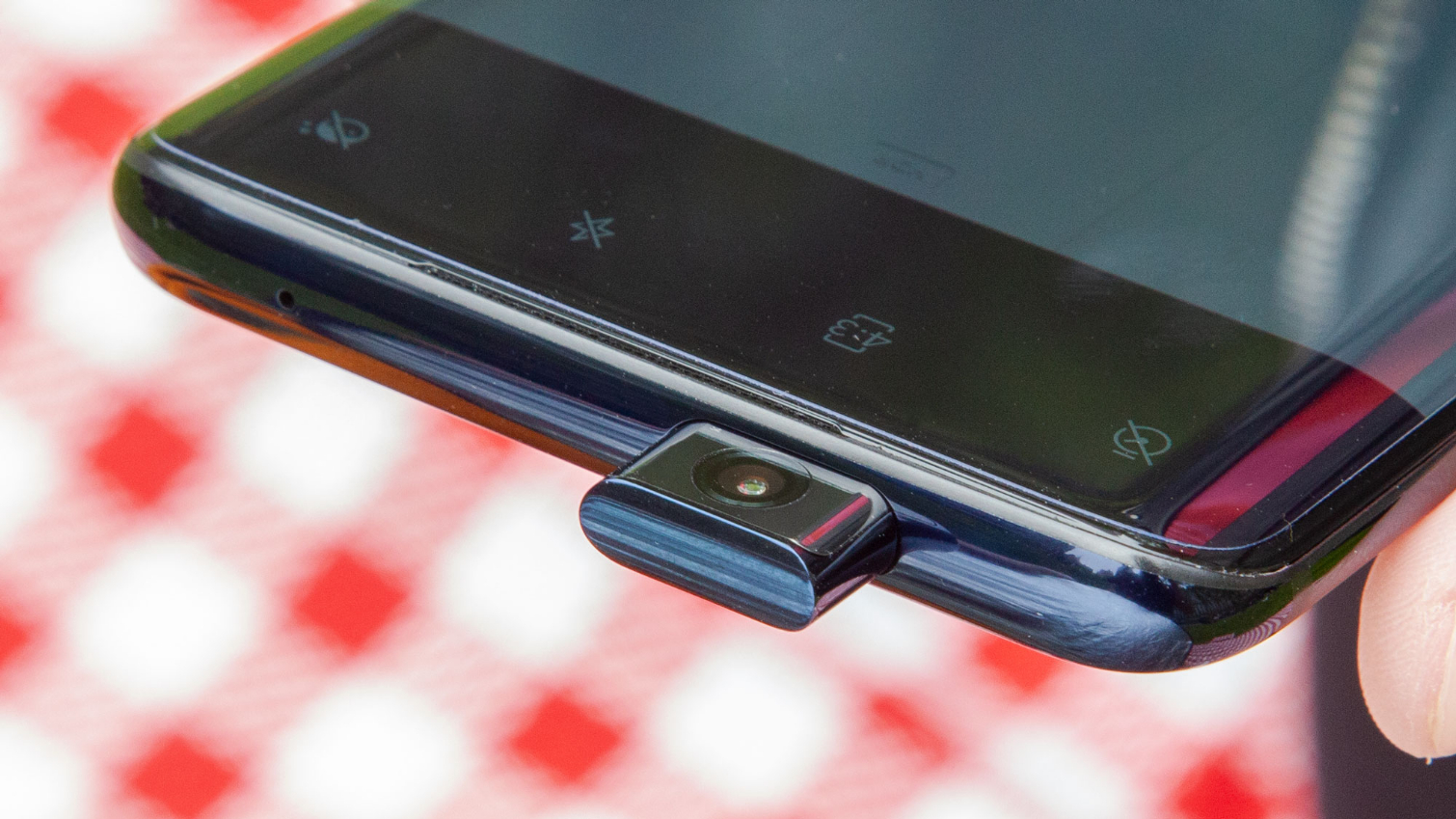
OnePlus says the retractable camera can sustain opening and closing up to 300,000 times. I obviously didn't get a chance to test the limits of that claim, but it feels sturdy. The company also told me the phone will retract the camera if its accelerometer and gyroscope sense that the device is in free fall. I did not test this, because I was afraid to.
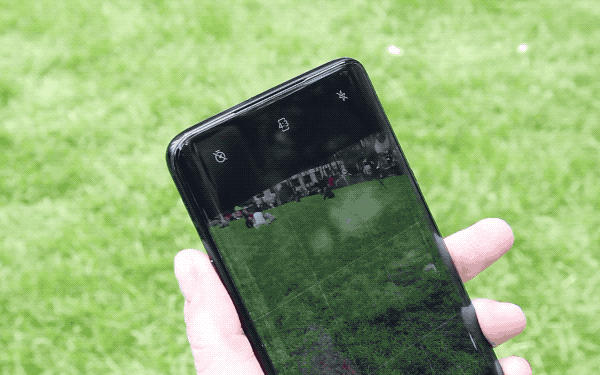
The Nightscape is much improved in the OnePlus 7 Pro. In my experience, it rivaled the Pixel 3 for amazing low-light images.
The 7 Pro's camera results aren't as consistently amazing as the Pixel 3's AI-boosted shots, or as natural as the iPhone XS's images. But they are very good. If you're upgrading from an older OnePlus, the 7 Pro's camera alone is worth the money.
Software: OxygenOS offers new tricks
OxygenOS, the OnePlus take on Android Pie, is my favorite of all the Android OEMs. It’s clean, simple, easy to navigate and looks really, really good. OnePlus added two new features to OxygenOS that are actually useful: Screen Recorder and Zen Mode are both accessible in the shortcut tray just a swipe down from the home screen.
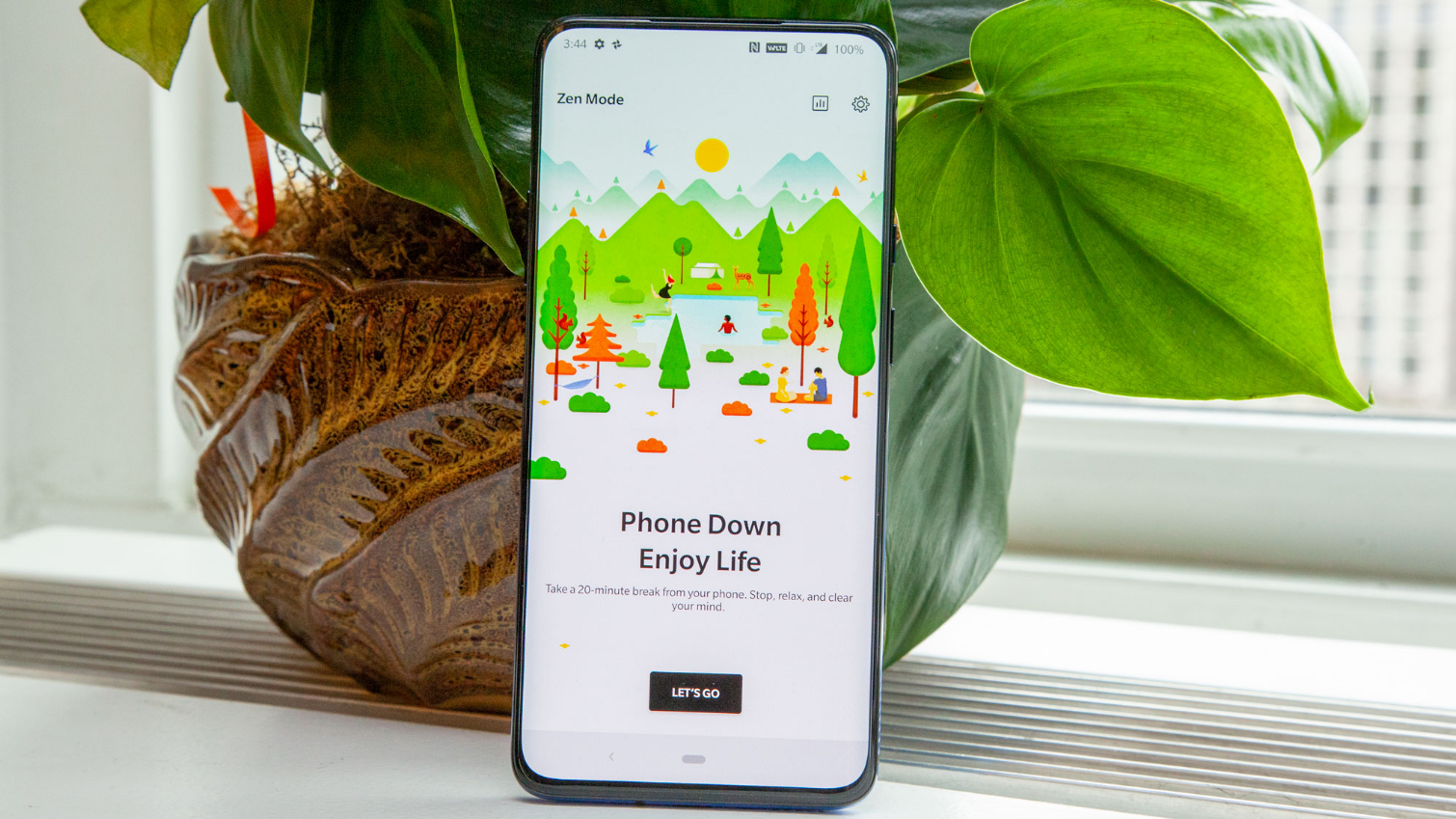
Screen Recorder is self-explanatory, but incredibly handy. Just tap the icon to launch the recorder, then hit the record button to start taking a video screenshot of your activity. This is useful for how-to help — assisting parents with tech tasks without having to be physically present — or for sharing videos of gaming sessions with friends (or the internet).
OnePlus offers a ton of settings for Screen Recorder, including resolution, bit rate, the audio source of the recording, video orientation and, my personal favorite, the option to show a white marker where your finger touches the screen while recording. Instead of adding gimmicky software to an otherwise good phone (LG, I'm looking at you), OnePlus made its latest features practical.
MORE: OnePlus 7 Pro Will Fix This One Big Complaint
Then there's Zen Mode, which dials up the Digital Wellbeing features that Google has been working on to make smartphones less addictive. Zen Mode locks you out of your phone for a full 20 minutes — no notifications, no distractions. You can't even circumvent Zen Mode by turning the phone off. You can still make and take calls, and shoot photos. But this is so much more effective than setting timers for apps or making everything grayscale (at least for me). Being locked out of my phone is the only way I won't use it.
Performance: With 12GB of RAM, we’re in iPhone territory
Smartphone makers tend to sacrifice in some areas to beef up others while keeping device prices low. Google's Pixel 3a takes amazing photos, but uses an older Qualcomm processor, which results in lagging performance.
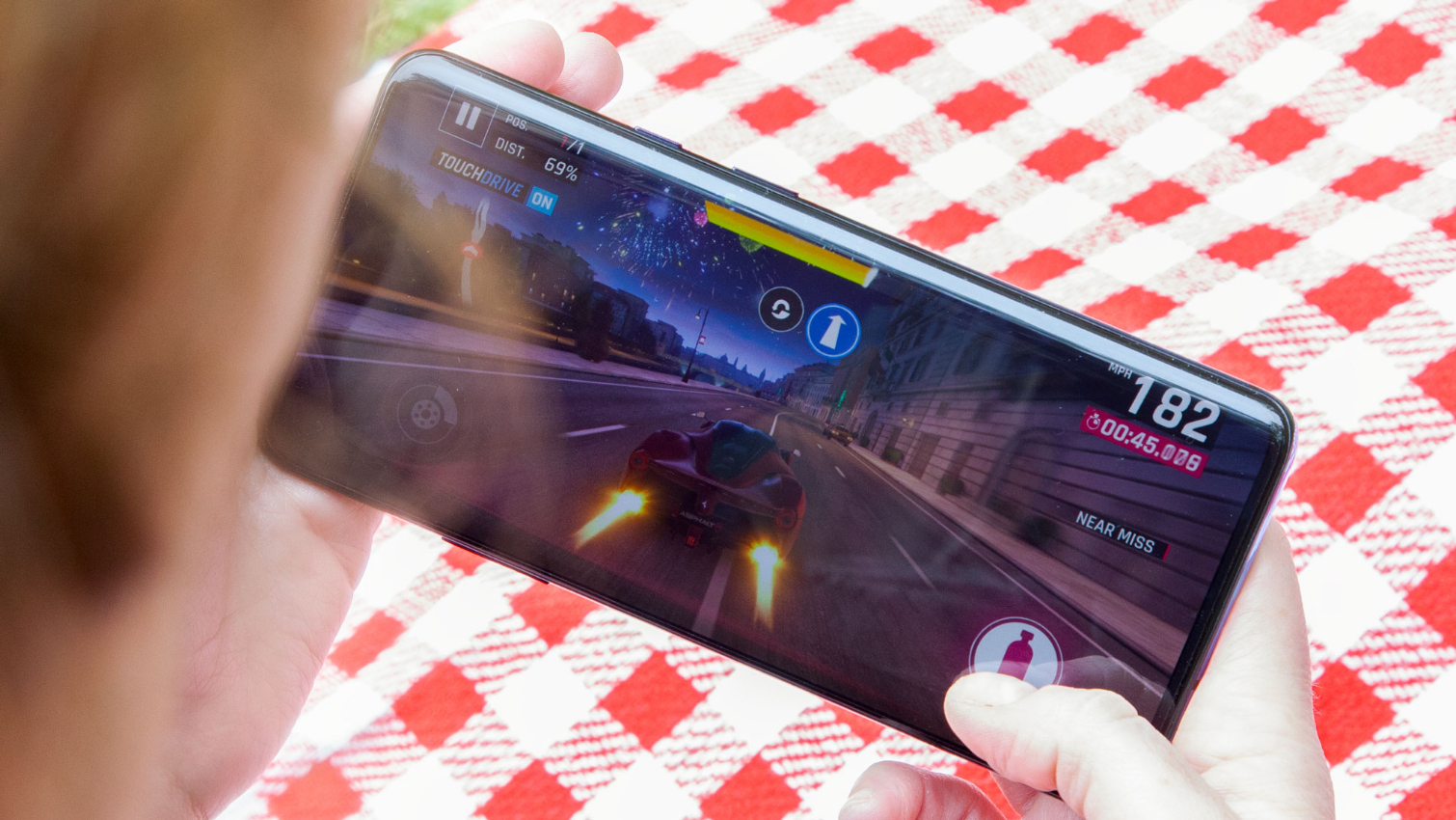
You don't make that trade-off with the OnePlus 7 Pro. The $749/£799 version of the phone that I tested came with 12GB of RAM, which resulted in a 11,227 score on the Geekbench 4 test of overall system performance. That's right up there with the $999/£999 iPhone XS (11,420) and its A12 Bionic processor. The 7 Pro easily blazes past the $999/£799 Galaxy S10 Plus (10,732).
Synthetic benchmarks aside, the 7 Pro just feels snappy. Web-browsing, playing endless rounds of Asphalt 9, checking the weather while streaming Netflix — everything I did was quick and easy. No lags, no crashes. That's what I expect from $1,000 flagships. For this price? The bar gets a little lower. But not for OnePlus.
MORE: The OnePlus 7 Pro Makes Sense, But Will Anyone Buy It?
But even if you only spend $669/£649, you'll still get Qualcomm's Snapdragon 855 CPU, which powers all of 2019's premium flagships. You might not get iPhone-level speeds, but 6GB of RAM is nothing to sneeze at. For an extra $30/£50, you can snag 8GB of RAM. That'll cost you $699/£699. Meanwhile, Samsung charges $999/£799 for 8GB of RAM and Snapdragon 855 in the Galaxy S10 Plus — and you have to deal with that oval camera cut-out on your phone's display.
Security: Face recognition vs. in-screen fingerprint
The 7 Pro offers two forms of biometric authentication: the in-display optical fingerprint sensor, which OnePlus has improved since first implementing the feature in last year's 6T, and facial recognition.
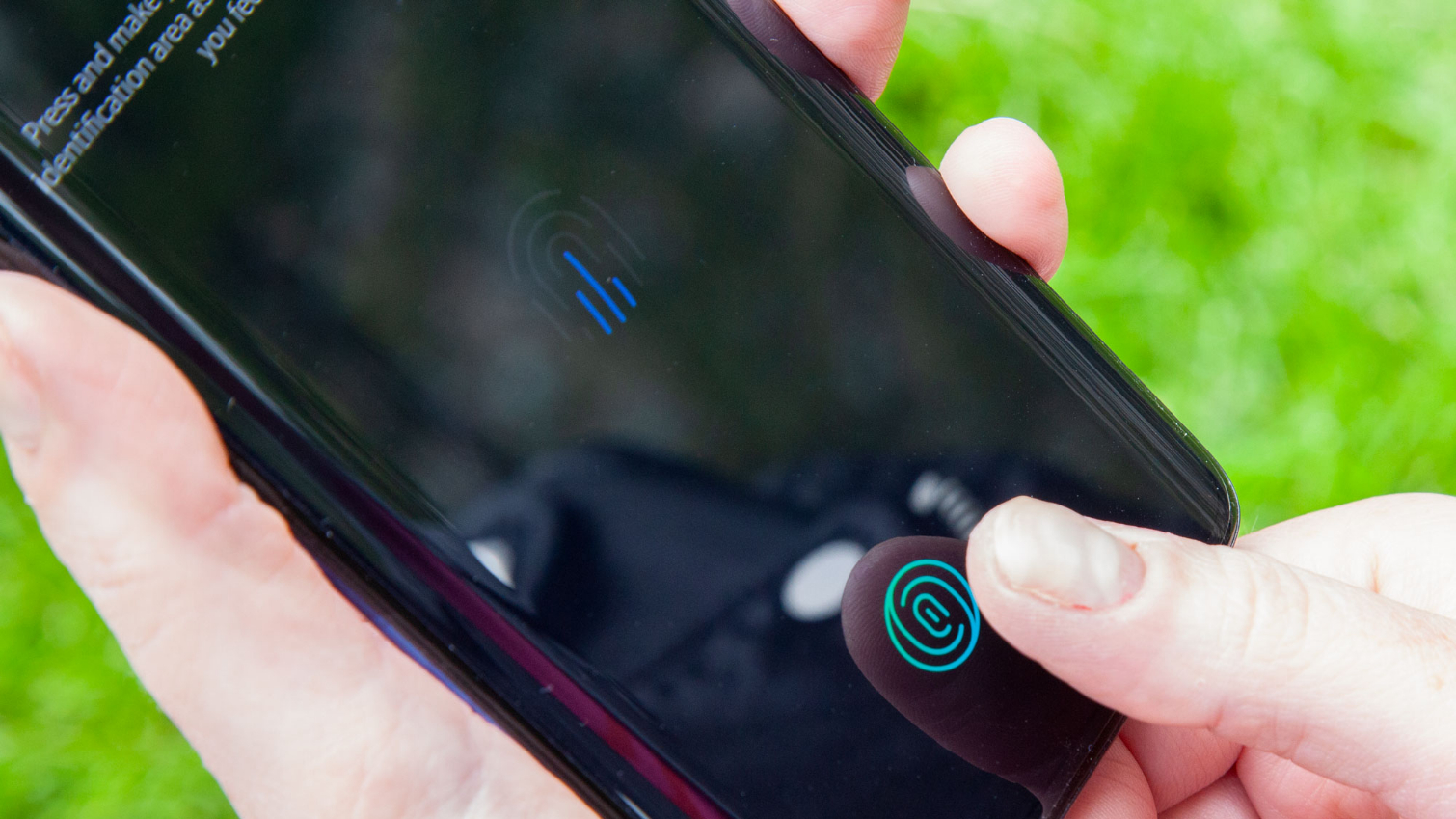
Both forms are lightning fast. As soon as I pressed my thumb to the highlighted fingerprint sensor on the dark display, I was instantly on the home screen. (OnePlus says the new sensor takes 2.1 seconds to unlock, and recognizes fingerprints more quickly than the 6T.)
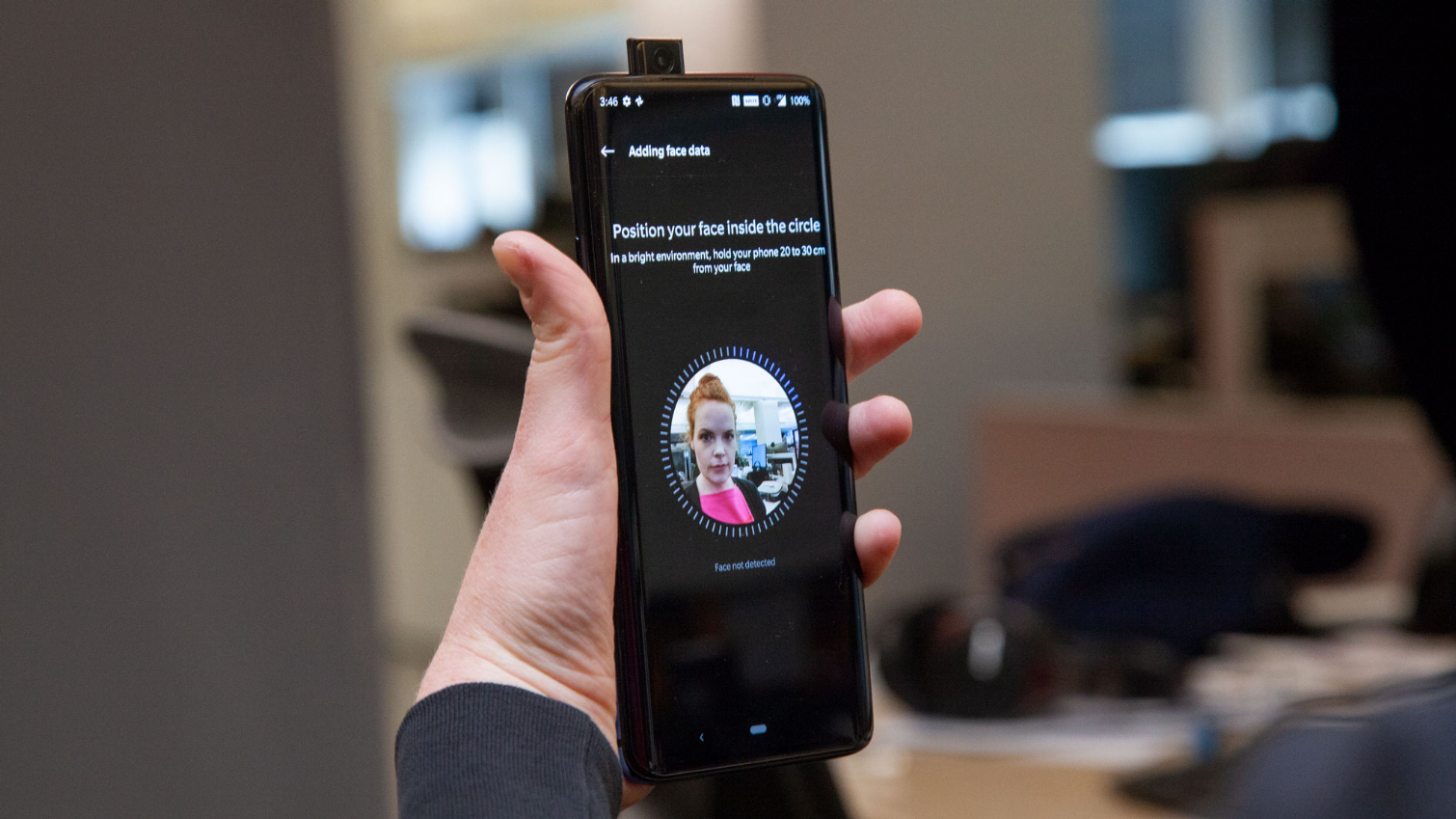
Then I set up Face Unlock. I thought it might be inconvenient, because the front-facing camera has to pop up, scan my face, retract and open the phone's home screen. Despite all of that, the 7 Pro's Face Unlock feature is much faster than the iPhone XS's Face ID. OnePlus says it takes 0.53 seconds for the front-facing camera to pop up and then 0.65 seconds for the phone to unlock. It definitely felt like a 1-second process. (Pro tip: Showing this feature to people is an excellent party trick.)
MORE: OnePlus 7 Pro to Offer 5G, 'Breakthrough' Display
However, the 7 Pro's facial recognition isn't secure enough to authenticate payments. I tried to fool the camera with a photo of myself, which didn't work. That's an improvement over the Galaxy S10, which can be easily unlocked with a photo or video of a person's face. I left both unlocking methods toggled on while testing the 7 Pro, and I almost forgot that my phone was ever locked at all — it was always open to the home screen.
Battery life and Warp Share
The 7 Pro falls short in one key way: battery life. We're beginning to expect more from flagship phones as their battery packs add more milliamps, and the OnePlus 7 Pro's 4,000 mAh battery should result in lengthy battery life. But on the Tom's Guide Battery Test, continuous web-surfing over T-Mobile's LTE network until the battery dies, the 7 Pro lasted just 9 hours and 31 minutes.

The iPhone XS Max (10:38) and Galaxy S10 Plus (12:35) easily cruised past the 7 Pro. Even last year's OnePlus 6T (10:23) outlasted the 7 Pro. Google's Pixel 3 XL (9:30) was right in line with the 7 Pro, but that phone is also 9 months old and its battery life was a bit of a disappointment as well, compared with other Google phones.
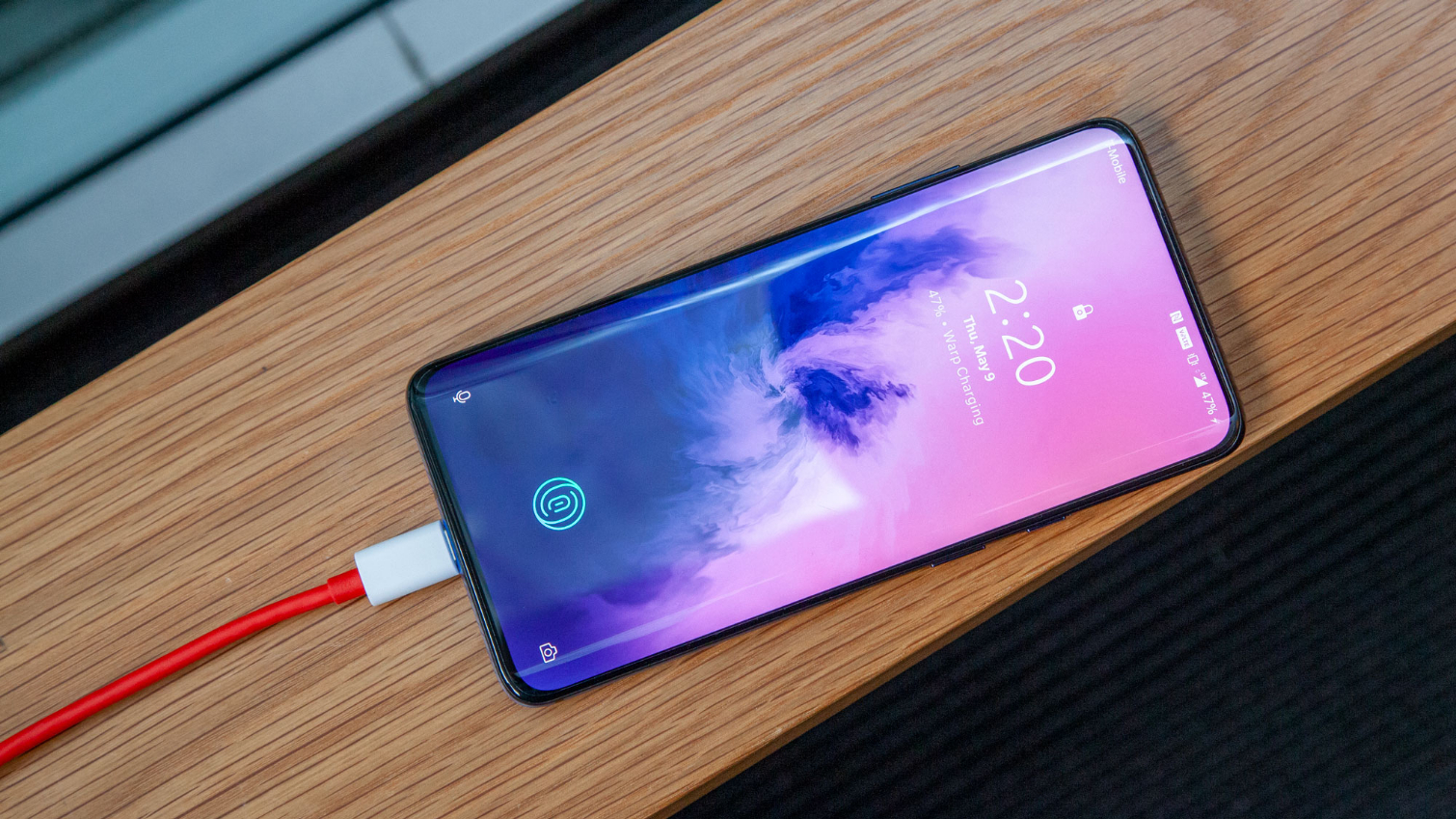
The 7 Pro's saving grace is OnePlus' Warp Charge 30 rapid-charging technology, which the company introduced in the 6T McLaren edition. Using the charging brick and cable included in the box, the 7 Pro juiced up from 0% to 60% in 30 minutes. After an hour, the 7 Pro was almost fully charged at 92%. I couldn't be mad.
Bottom Line
The OnePlus 7 Pro has a higher price tag than almost any other OnePlus device before it, which can be hard to stomach if you expect sub-$600 phones from OnePlus. (The arrival of the $599 OnePlus 7T, which offers some of the same features as the 7 Pro, takes some of the sting away. Read our OnePlus 7 Pro vs. OnePlus 7T face-off to see what trade-offs you make with each phone.) But $669/£649 delivers high-end flagship design, performance and software. Compared with other premium Android handsets, OnePlus delivers in every way — for hundreds of dollars less even with this model's jump in price.
It's not a perfect phone. But as companies demand more and more money for more and more features, the OnePlus 7 Pro is a refreshingly affordable alternative.
Credit: Tom's Guide
Our OnePlus promo codes can help you save on the latest devices. Use our codes to snag discounts on OnePlus smartphones and accessories. Enjoy top-tier technology and performance while staying within your budget.
Caitlin is a Senior editor for Gizmodo. She has also worked on Tom's Guide, Macworld, PCWorld and the Las Vegas Review-Journal. When she's not testing out the latest devices, you can find her running around the streets of Los Angeles, putting in morning miles or searching for the best tacos.
